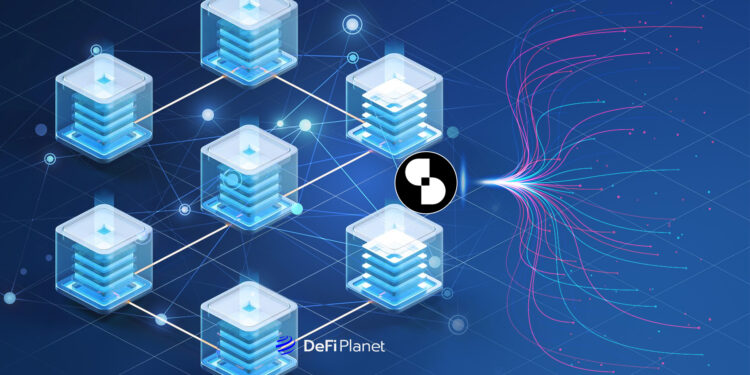Last updated on June 20th, 2025 at 03:12 pm
Ethereum’s Layer 2 (L2) solutions play a critical role in scaling the network. By offloading transactions while inheriting Ethereum’s security, L2s reduce costs and boost throughput. Arbitrum, Optimism, and zkSync are leading this charge.
But as L2s grow, they’re no longer forming in isolation. A clustering trend is emerging, where new L2s align around dominant ecosystems and shared tech stacks. As Blockscout’s Ulyana Skladchikova and Kirill Fedoseev observed, these clusters often standardize infrastructure and tooling, improving internal interoperability—but potentially at the cost of broader connectivity.
Even Ethereum co-founder Vitalik Buterin has flagged this risk, warning that clustering could undermine Ethereum’s unified vision. Supporters argue the opposite: clusters drive meaningful interoperability, at least within their respective domains.
So, are L2 clusters drawing Ethereum closer together—or carving it into silos?
What Is L2 Clustering?
Ethereum’s L2 clustering refers to the growing trend of networks forming groups around dominant L2 ecosystems. Instead of a fully decentralized and diverse landscape, many L2s are aligning with specific technological frameworks, creating distinct clusters.
Why Are L2 Clusters Forming?
L2 clustering is happening for several reasons:
- Shared Infrastructure
Many Layer 2 networks use existing frameworks to speed up development and take advantage of tested scalability solutions. Optimism’s Superchain is a great example. It uses the OP Stack to create a unified system with consistent security and governance. To make sure all OP Stack chains work smoothly together, a new service called OP Supervisor has been introduced.
Every node operator must run this service along with their rollup node and execution client. This shared setup helps connect different networks more easily, reducing technical challenges and making the Superchain more efficient.
- Ecosystem Incentives
Leading L2 providers offer grants, liquidity incentives, and technical support to encourage projects to build within their ecosystems. Arbitrum’s Orbit framework does this by enabling custom L2 and Layer 3 (L3) networks to build on its rollup technology. Orbit chains function as customizable instances of the Arbitrum Nitro tech stack, allowing projects to tailor networks to their specific use cases and business needs.
This flexibility enables applications to gradually decentralize while incrementally adopting Ethereum’s security and properties, making it easier for projects to scale without compromising on core blockchain principles.
- Interoperability Within Clusters
Networks utilizing similar technologies often integrate more seamlessly, leading to smoother transactions and enhanced user experiences within these clusters. Zero-knowledge (ZK) rollup-based networks like zkSync and Starknet are forming their own clusters, as developers optimize applications for their unique cryptographic proofs.
Is this a Shift from Web3’s Open Vision?
Ethereum’s original vision emphasized an open, interoperable ecosystem where any L2 could interact seamlessly with others. But this clustering trend appears to be one that was organically formed for somewhat specific purposes.
The Promise of Faster Interoperability
L2 networks that align with the same frameworks and standards can optimize interoperability and reduce friction. By sharing common infrastructures, clusters enable faster transactions.
Networks within a cluster can settle transactions quickly using the same rollup technology and bridging mechanisms. For example, Optimism’s Superchain enables seamless asset transfers between OP Stack chains like Base and Mode, reducing delays and fees. Similarly, Arbitrum Orbit allows custom L2s within its ecosystem to settle transactions efficiently without requiring complex bridging mechanisms.
- Reduce Development Complexity
Projects can integrate more easily when they follow standardized protocols within an ecosystem. zkSync’s Hyperchains, for instance, ensure that multiple rollups share the same security and liquidity while allowing near-instant transactions between chains, simplifying development for new projects.
- Enhance Liquidity Flow
Assets can move freely within a cluster without requiring multiple bridges or additional security layers. By maintaining close compatibility within their ecosystems, networks like Optimism’s Superchain, Arbitrum Orbit, and zkSync Hyperchains ensure smoother liquidity movement, benefiting both users and developers.
The Benefits of Shared Security and Governance
Clusters benefit from unified security models, rollup frameworks, and governance structures, making transactions more seamless and cost-effective.
Networks using the same framework often inherit security properties from a central Layer 1 (L1) blockchain or a trusted sequencer, reducing individual risks. For example, Optimism’s Superchain ensures that all OP Stack-based chains share Ethereum’s security guarantees while benefiting from a decentralized sequencing model.
Similarly, zkSync’s Hyperchains leverage cryptographic proofs to maintain high-security standards across interconnected rollups.
Many L2 clusters establish coordinated governance mechanisms, enabling collaborative decision-making on key aspects like protocol upgrades, fee structures, and security parameters. For instance, Optimism’s Superchain governance model facilitates network-wide discussions on protocol changes, while Arbitrum’s DAO-driven governance allows stakeholders to influence the development and economic policies of the ecosystem.
What about the Risk of Reinforced Silos?
The formation of clusters around dominant technology stacks enhance efficiency within their ecosystems, they also raise concerns about increased fragmentation and the potential creation of new silos.
Each cluster develops unique protocols and standards that complicate interactions between different L2 solutions. This fragmentation poses challenges for users and developers aiming for seamless cross-cluster communication. Without widely adopted interoperability frameworks, users may face higher costs and delays when moving assets between ecosystems.
The issue gets worse because relying on cross-chain bridges to facilitate asset transfers and data exchanges between distinct L2 clusters could be a solution but these bridges introduce complexities and potential security vulnerabilities. Centralized bridges, in particular, may become single points of failure, exposing users to risks such as smart contract bugs and custodial mismanagement. Recent bridge exploits, such as the Ronin and Wormhole hacks, highlight the ongoing risks associated with centralized bridging mechanisms.
The dominance of certain L2 ecosystems also raises concerns about monopolization within the Ethereum network. Clusters around leading technology stacks potentially stifle innovation and diversity because it makes it extremely difficult for smaller or independent L2 solutions to compete.
Finally, this concentration of influence could lead to a less decentralized ecosystem, contradicting the foundational principles of blockchain technology. Ensuring a competitive environment where emerging L2 solutions can thrive will be key to maintaining Ethereum’s long-term resilience and decentralization.
Can Clusters and Interoperability Coexist?
proprietary interoperability solutions within clusters could limit cross-chain communication, making Ethereum feel more like multiple separate ecosystems rather than one unified network.
The solution lies in open, standardized protocols for cross-chain communication. Promising efforts include Chainlink’s Cross-Chain Interoperability Protocol (CCIP) and the Inter-Blockchain Communication (IBC) protocol.
CCIP provides a universal way for different blockchains to communicate, enabling secure token transfers and data sharing across chains. Similarly, IBC allows blockchains to exchange information and value without needing intermediaries, making cross-chain transactions more efficient and secure. Adopting such protocols is crucial for connecting isolated L2 networks into a more unified Web3 ecosystem.
To prevent L2 networks from becoming isolated silos, developers are working on trustless bridges and modular blockchain designs. Trustless bridges allow assets and data to move between blockchains without relying on intermediaries, using cryptographic proofs and smart contracts for security. Projects like Snowbridge and Hyperbridge in the Polkadot ecosystem are leading the way in secure, decentralized cross-chain communication.
Meanwhile, modular blockchain designs focus on improving how blockchains interact. Innovations from Lagrange Labs aim to enhance security for cross-chain transactions and expand the types of computations that can be performed across different blockchains. These approaches help create a more connected and flexible blockchain ecosystem, reducing the risk of L2 clusters becoming isolated.
Final Thoughts
Will L2 clusters enhance Ethereum’s network effects—or undermine its core vision?
If they remain open, composable, and interoperable, clusters could accelerate Ethereum’s growth while retaining its decentralized ethos. But if they evolve into self-contained ecosystems with proprietary bridges and governance, they may create silos that slow down innovation and limit Ethereum’s reach.
The future depends on how developers and ecosystem leaders prioritize interoperability. As tools like CCIP, IBC, and modular blockchain designs mature, Ethereum has a chance to weave its many L2s into a single, resilient web.
The challenge is balancing efficiency with openness—and doing so before fragmentation becomes the norm.
Disclaimer: This article is intended solely for informational purposes and should not be considered trading or investment advice. Nothing herein should be construed as financial, legal, or tax advice. Trading or investing in cryptocurrencies carries a considerable risk of financial loss. Always conduct due diligence.
If you would like to read more articles like this, visit DeFi Planet and follow us on Twitter, LinkedIn, Facebook, Instagram, and CoinMarketCap Community.
Take control of your crypto portfolio with MARKETS PRO, DeFi Planet’s suite of analytics tools.”





















